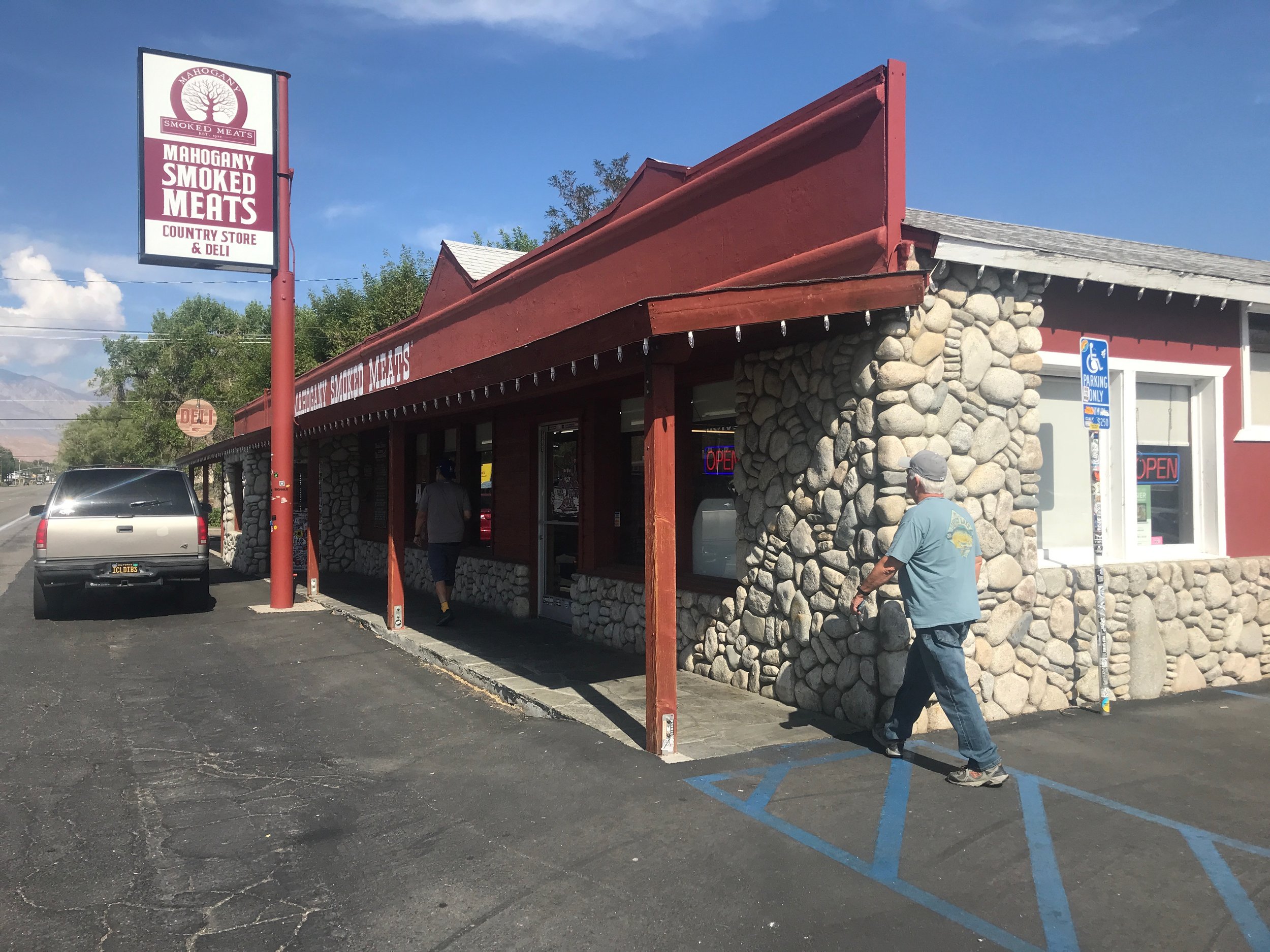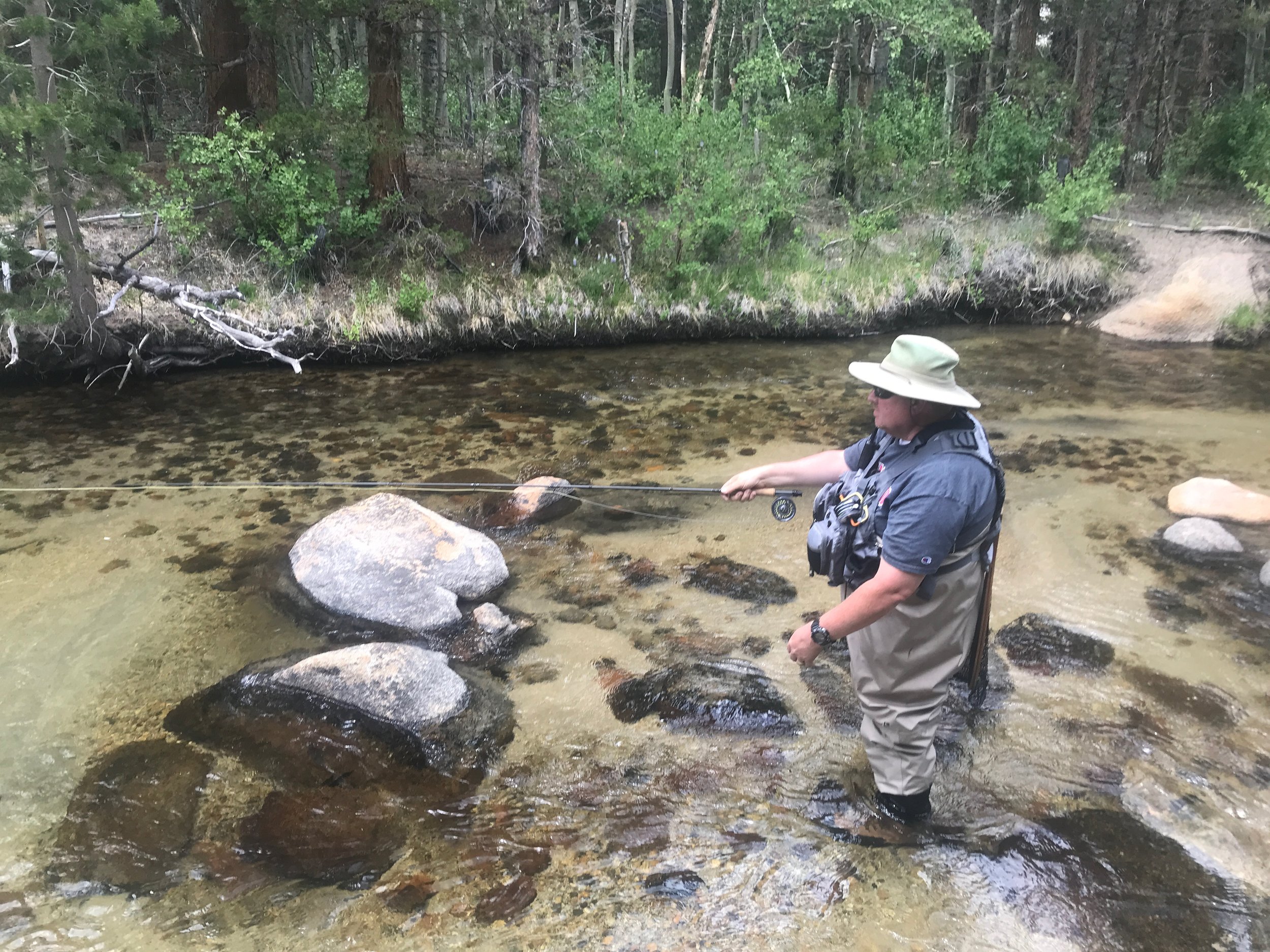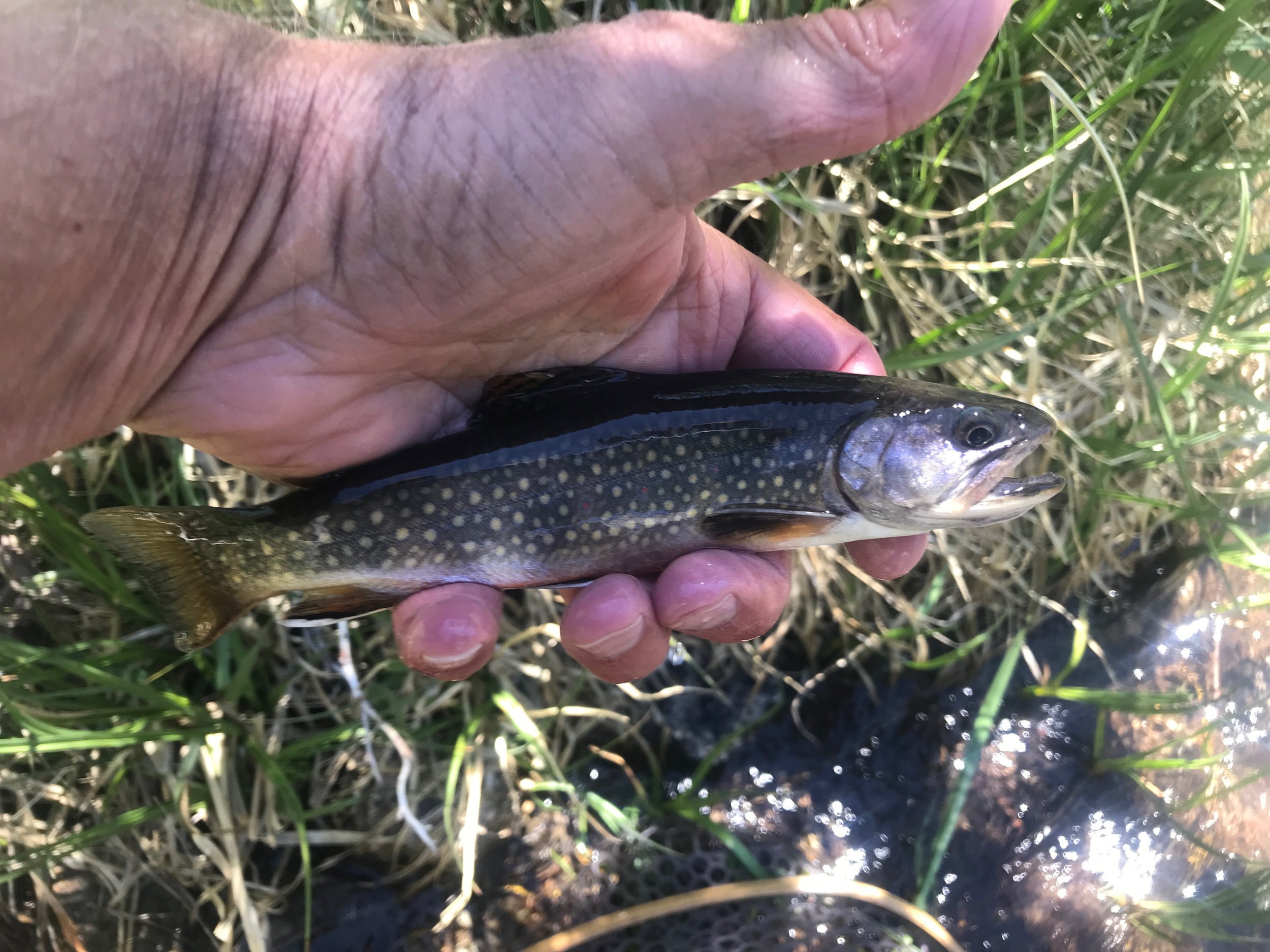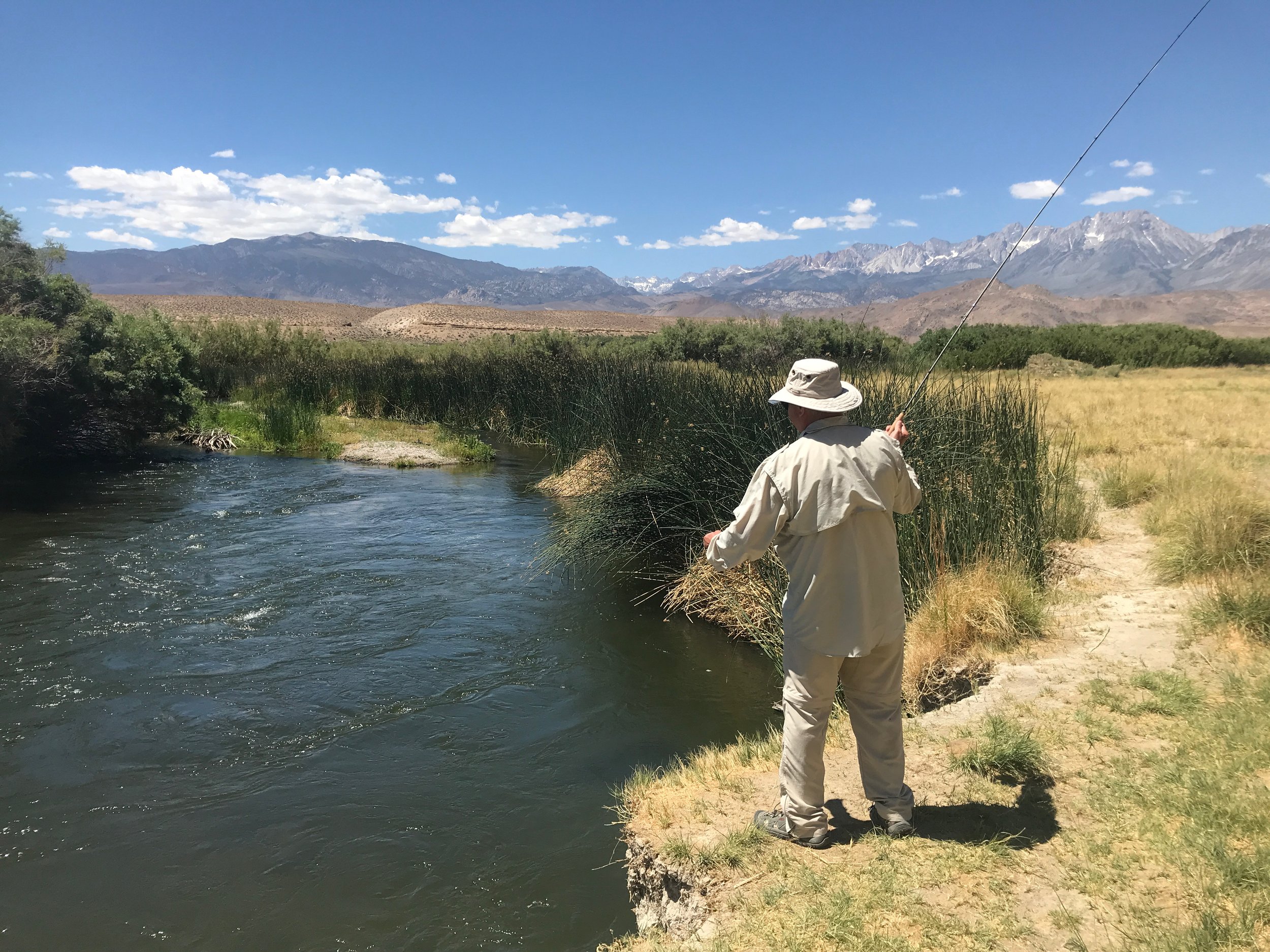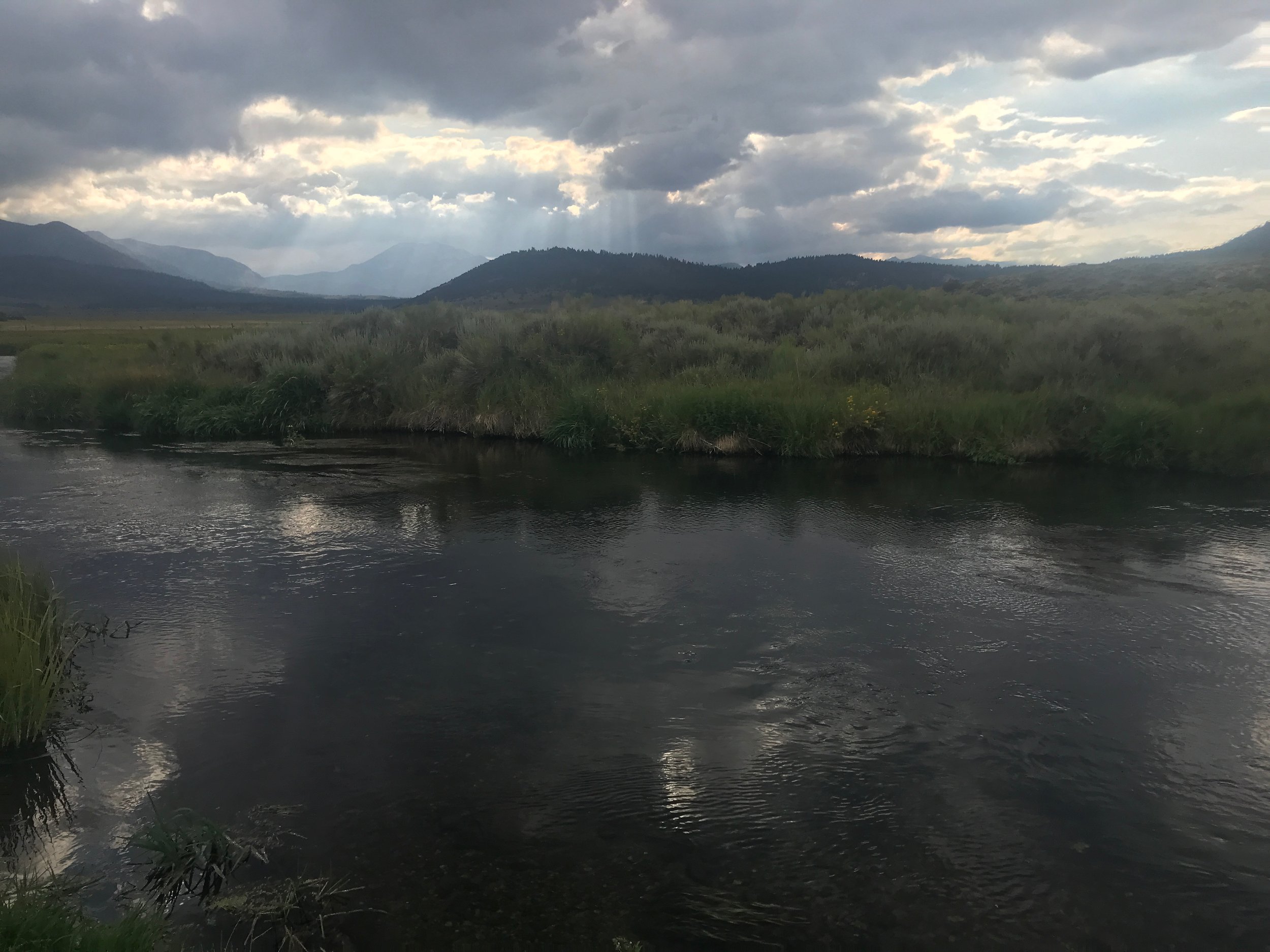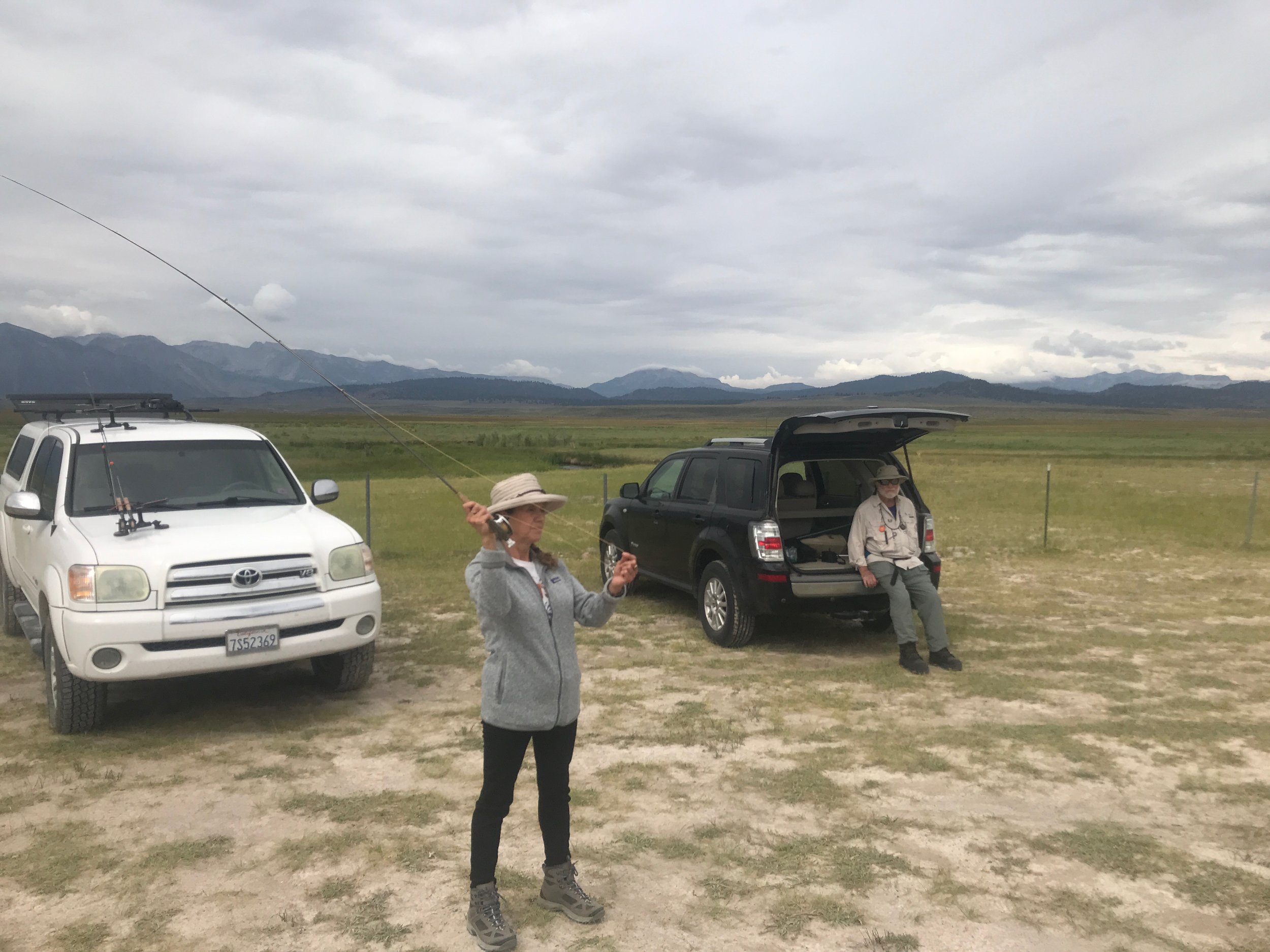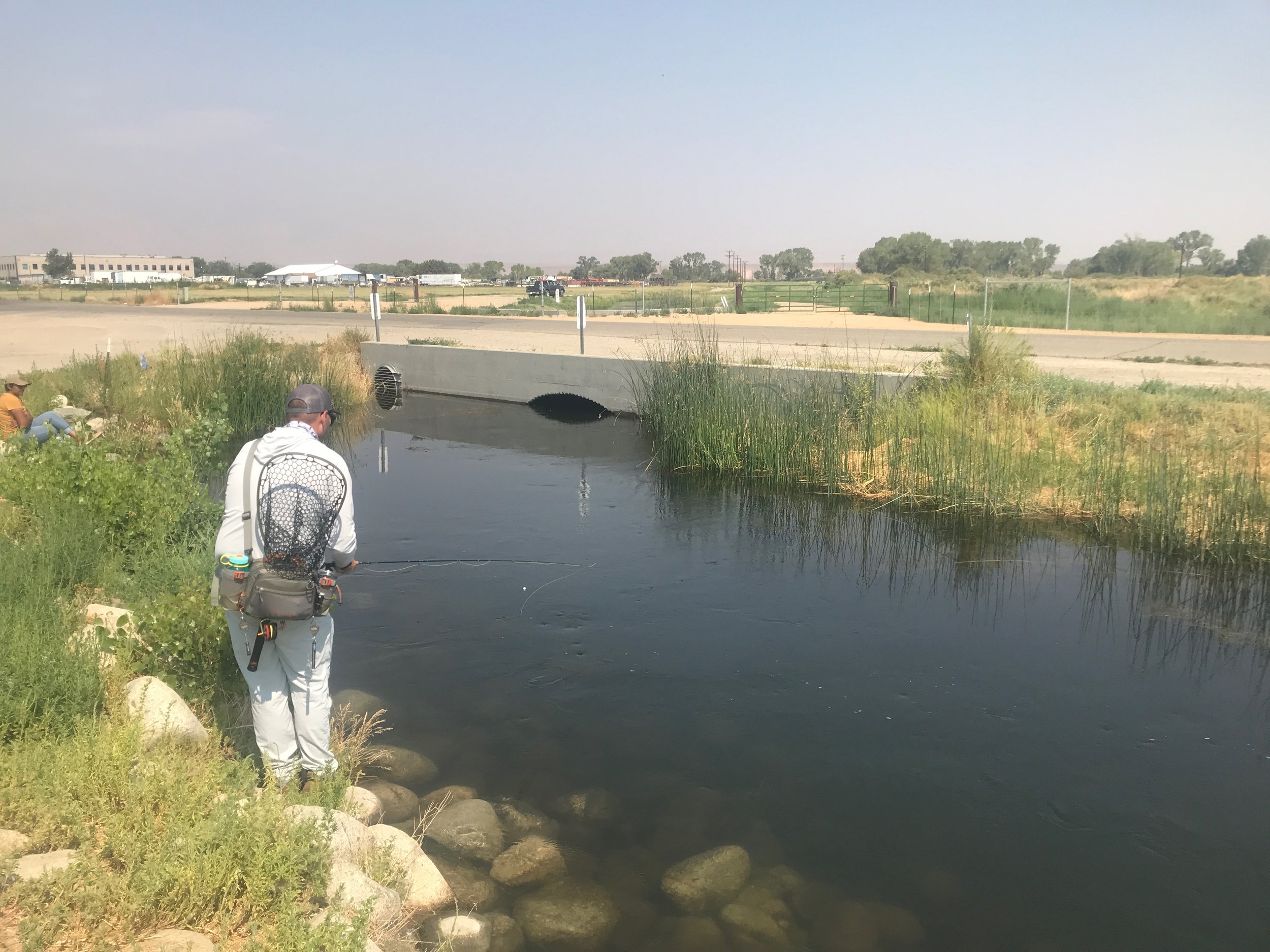Well summer’s heat took a back seat to cool rainy weather this week. The rain is cooling the streams making some waters under the volunteer hoot howl fishable all day. Be sure to use a thermometer to check the waters temperatures starting around 11:00 A.M. or noon. The heavier rains are pushing terrestrial and aquatic insects into the water turning them into wet flies – drowned insects of ants, grasshoppers, caddis, mayflies etc. The freestone creeks that drain the eastern slopes of the Sierra have been offering good dry fly and dry and dropper fly fishing opportunities for stocker rainbows, and wild brown trout, brook trout, and brown trout.
Tuesday Talks with Fred:
I have been meeting clients, locals, and social media followers every Tuesday from 9:00 A.M. to 11:00 A.M. at Mahogany Smoked Meats on 2345 N. Sierra HWY. I just hang out with everyone talking about fly fishing in the Eastern Sierra and munching on a burrito. The only time I’m not there is when I’m off guiding. Check my Facebook page or Instagram on Monday’s as I post if I’m going to be there or not. Please join me so we can talk fly fishing. All levels of anglers are welcome.
Walking into Mahogany Smoked Meats where Tuesday Talks with Fred are held every Tuesday from 9:00 A.M. to 11:00 A.M .
Freestone Streams:
Rock Creek:
Campers and hikers are making a last effort to enjoy the fly fishing and backcountry before summer comes to an end. The fly fishing continues to be good with dry flies and a dry and dropper rig, my preferred method. Water levels continue to drop and fly fishers need to make stealthy approaches to the stream if they want to catch trout. As the water levels drop the trout get spookier to the approach of fly fishers. I’m fishing with a size 16 Adams parachutes and a size 16 bead head flash back gold ribbed hare’s ears.
Wading upstream in Rock Creek allows fly fisher Charles Phillips to sneak up on the holes the trout are inhabiting.
Bishop Creek
South Fork:
I’m bush whacking into areas that few fly fishers have tried fly fishing. Sometimes I find wide open spots where I can wade up the stream and cast to the boulder formed pocket water and pools the trout are inhabiting. Most of the time I’m inhibited by the stream side vegetation and can only roll cast or dabble the flies to the spots that I think the trout are inhabiting. I’m fishing with size 16 Adams parachutes and size 16 bead head flash back gold ribbed hare’s ears that the wild brown trout, rainbow trout, and brook trout readily take.
The closer you get to South Lake the more brook trout you will find taking your favorite dry fly.
Lower Owens River:
Wild Trout Section:
The clouds and rain have cooled things off enough that fly fishers can fly fish all day. Insect activity has been early and late making it the best time to be on the river fly fishing. I’m working my Euro rig in here in the mornings through the holes and riffles that are holding trout. I’m fishing with a Butano nymph, a stoner nymph, and a gold ribbed hare’s ear. Evening caddis activity have the trout feeding, but the mosquitoes are out and their feeding on me.
Casting your nymph rig to the drop off and letting it float naturally through the hole will produce wild brown trout and the occasional rainbow trout.
Hot Creek:
Interpretive Site:
Hatches of mayflies and caddis are keeping the trout actively feeding on the surface. The trout start of the morning feeding on size 22 female tricos. Then they switch to spinners when the spinner fall happens. I’m fishing with a size 22 trico spinner pattern. After the tricos the caddis hatch may or may not happen. Be prepared for this hatch with size 20 X-caddis, size 20 parachute caddis, or size 20 partridge spent caddis. I’m fishing all these caddis with gray bodies.
You never know what the weather will be like when you’re fly fishing on Hot Creek.
Hot Creek:
Canyon Section:
The canyon has had plenty of fly fishing pressure. Fishing is toughest in August when the weed beds are fully mature. A well-presented, a drag free drift, dry fly during the hatch is going to allow the fly fisher to present the fly in the narrow channels between the weed beds. I’m fishing with trico parachutes and gray bodied caddis. Nymphs are tough to fish in between the weed beds, but a well drifted nymph well produce some nice browns from under the matts of weeds.
Rebeca Vizcaino from La Selva Beach is learning to cast a fly rod in the parking lot on the upper Owens River.
Upper Owens River:
Above Benton Crossing Bridge:
Cloud cover and rain most of the week as kept water temperatures in the safe zone. Morning hatches of trico mayflies have the trout feeding on the surface. I’m using a size 22 trcio spinner three feet behind a size 16 Adams parachute. This dry and dry technique allows the fly fisher to see the bigger fly and then set the hook if the Adams moves or if you see any rises within three feet of the Adams Parachute. After the trico hatch there is a size 18 caddis hatching. I’m using size 18 brown bodied elk hair caddis. By noon the hatches are done and the fly fishing grinds to a halt. Late afternoon hatches of mayflies and caddis bring the trout back out to feed. By evening the mosquitoes show up to feed on the anglers.
Fly fisher Richard Standridge is being watched by Wife Dolly as he indicator nymphs Bishop Creek Canal.
Bishop Creek Canal:
Behind the Ford Dealer:
The cloud cover and rain have cooled off the water in the canal increasing the trout activity. I’m mostly nymphing with bead head flash back gold ribbed hare’s ears, green/gold wire Prince nymphs, and stoner nymphs. Best fishing has been in the mornings and in the evenings. I’m using my Euro nymph rod and finding lots of wild brown trout willing to take my flies.

